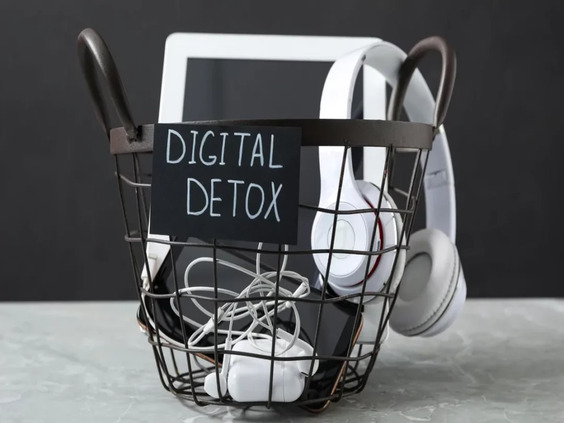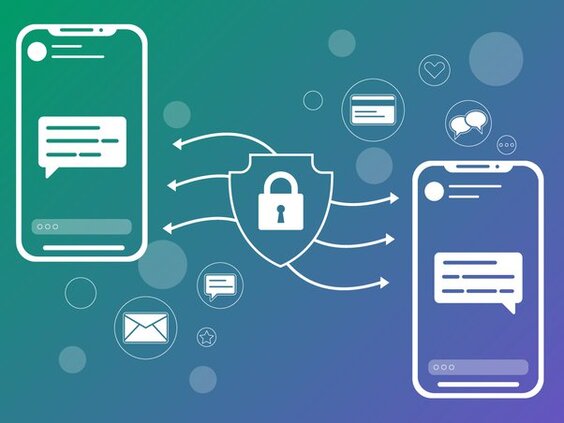

In today’s digital-first world, students are more connected than ever. While technology enhances learning, excessive screen time can have detrimental effects on students’ mental health, academic performance, and social skills. Teachers play a crucial role in identifying digital addiction and guiding students toward a balanced digital lifestyle through digital detox.
Understanding Digital Detox
Digital detox refers to a conscious break from digital devices, including smartphones, tablets, computers, and social media platforms. It encourages students to reduce screen time, reconnect with real-world experiences, and focus on personal well-being. Teachers can incorporate digital detox strategies into their classrooms to foster healthier habits among students.
Why Digital Detox is Important for Students
1. Enhances Mental and Physical Health -Prolonged screen time can lead to anxiety, stress, eye strain, and sleep disturbances. Digital detox helps in reducing these negative effects, promoting better mental and physical health.
2. Improves Academic Performance -Unregulated digital usage can distract students, leading to poor concentration and reduced academic engagement. A structured digital detox program can help them stay focused and enhance learning.
3. Encourages Meaningful Social Interactions -Excessive online interactions can lead to social isolation. Encouraging students to engage in face-to-face communication helps build interpersonal skills and strong relationships.
Identifying Signs of Digital Addiction in Students
Teachers must recognize the warning signs of digital addiction to intervene effectively. Some common indicators include:
-
Behavioral Signs: Constantly checking phones during class, loss of interest in offline activities, neglecting academic responsibilities.
-
Physical Signs: Eye strain, fatigue, irregular sleep patterns, and headaches.
-
Mental and Emotional Signs: Anxiety, irritability, mood swings, and decreased attention span.
-
Social Signs: Avoiding in-person interactions, increased preference for online relationships over real-life friendships.
How Teachers Can Educate Students About Digital Detox
1. Integrate Digital Detox Education into the Curriculum -Incorporate lessons on the impact of excessive screen time and the importance of digital detox in health and wellness classes. Use real-life case studies to illustrate its effects.
2. Encourage Self-Assessment - Ask students to track their screen time for a week and analyze their digital habits. Tools like screen time trackers on smartphones can help.
3. Promote Classroom Digital-Free Zones -Create tech-free spaces in classrooms where students can focus on face-to-face discussions, creative activities, and hands-on learning without digital distractions.
4. Assign Screen-Free Activities -Encourage students to participate in outdoor games, reading physical books, and engaging in hobbies that do not involve screens.
5. Conduct Awareness Workshops -Invite experts to speak on digital addiction, its effects, and how students can develop healthier digital habits. Organizing peer-led discussions can also be impactful.
6. Set Screen Time Rules for Homework -Encourage students to take breaks between online study sessions. Implementing the 20-20-20 rule (looking away from the screen every 20 minutes for 20 seconds at an object 20 feet away) can help.
7. Foster a Balanced Digital Lifestyle -Teach students time management techniques to prioritize offline activities, including mindfulness practices, journaling, and family interactions.
Practical Digital Detox Strategies for Students
1. Set Daily Screen Limits -Encourage students to define time limits for social media, gaming, and other non-educational digital activities.
2. Implement No-Screen Hours - Designate specific hours (such as before bedtime and during meals) as no-screen time.
3. Encourage Physical Activities - Physical exercise helps combat digital addiction by keeping students engaged in offline activities.
4. Use Digital Well-Being Tools - Introduce students to apps that help monitor and limit screen time, such as Google’s Digital Wellbeing or Apple’s Screen Time.
5. Develop Healthy Alternatives - Encourage students to explore interests like art, music, sports, or volunteering as meaningful alternatives to excessive screen use.
How Teachers Can Support Parents in Digital Detox Initiatives
1. Provide Educational Resources -Share articles, books, and research on the effects of excessive screen time and digital detox benefits with parents.
2. Encourage Family Digital Detox Challenges -Suggest weekend screen-free challenges where families engage in offline activities together.
3. Communicate the Importance of Sleep Hygiene -Educate parents on the impact of blue light exposure on sleep and encourage them to enforce no-screen bedtime routines.
Conclusion
As educators, fostering a healthy relationship between students and technology is essential. Digital detox is not about eliminating technology but about using it mindfully. By identifying digital addiction, educating students, and promoting balanced screen habits, teachers can help students develop healthier lifestyles, improve academic performance, and strengthen real-world connections.
The journey toward mindful technology use starts in the classroom, shaping responsible digital citizens for the future.
Cyber Hygiene Foundation
- TeachersOnlineSafety CyberAwareEducators DigitalSafetyForTeachers EdTechSecurity TeacherCyberSafety CyberAwareness CyberSafety SafeInternetForAll CyberHygieneForAll
You May Also Like It
The internet has transformed the way children learn, play, and
Instant messaging (IM) platforms have become indispensable for communication in
Leave A Comment
Don’t worry ! your e-mail address will not published.








0 Comments